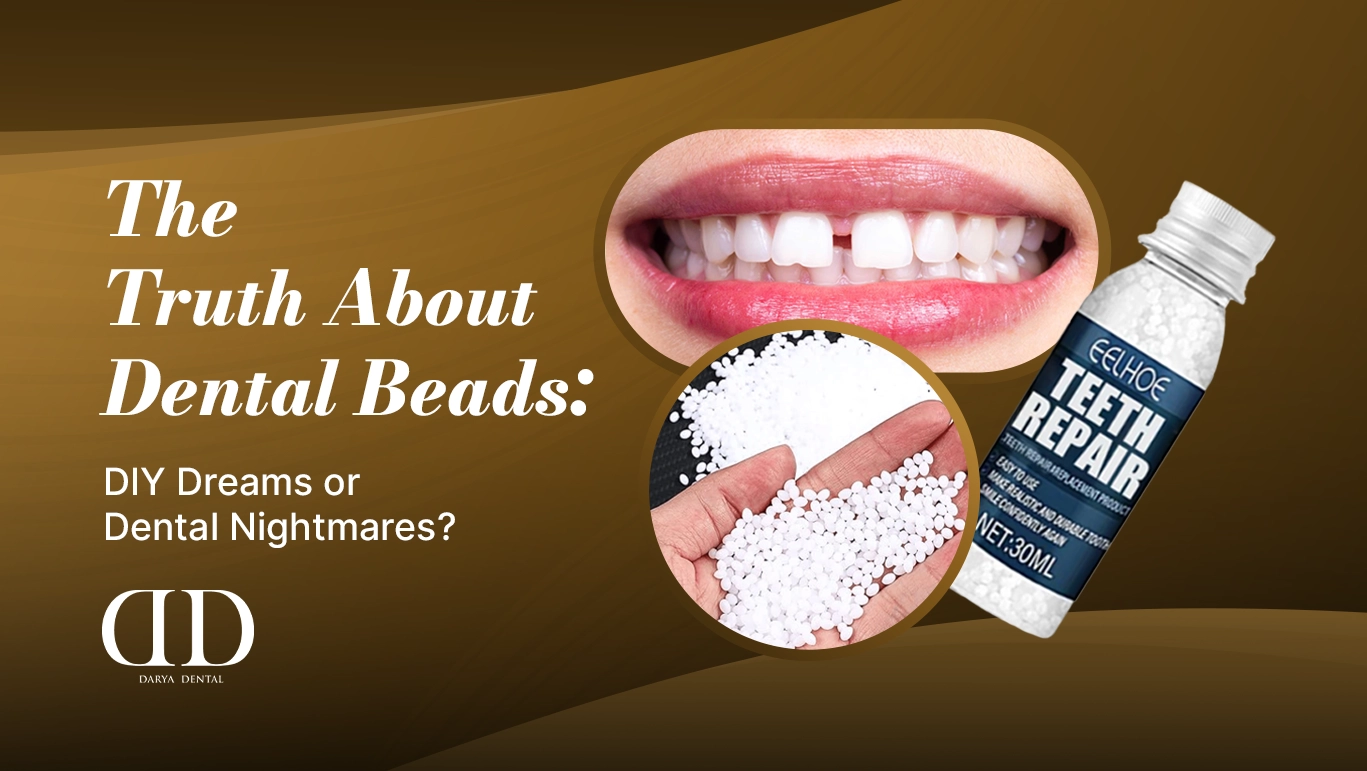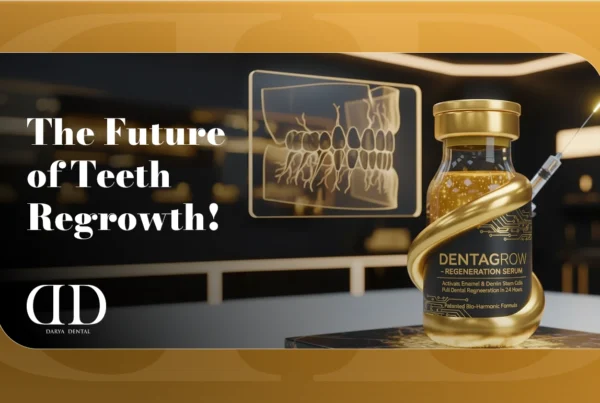Picture this: you’re scrolling through TikTok at 2 AM (we’ve all been there), and suddenly you stumble upon a video of someone crafting perfect pearly whites using what looks like tiny plastic beads and hot water. Welcome to the wild world of dental beads – the latest DIY trend that’s got everyone talking, but should it have you trying?
I’ll be honest with you – when I first heard about people using moldable plastic to create temporary teeth, my initial reaction was equal parts fascination and horror. It’s like watching someone perform surgery with kitchen utensils: technically possible, but absolutely not recommended.
Let’s dive deep into this phenomenon that’s captured the imagination of millions while simultaneously making dentists worldwide reach for their emergency contact lists.
What Exactly Are Dental Beads? The TikTok Phenomenon Explained
Dental beads, often referring to products like InstaMorph or similar thermoplastic materials, are small plastic pellets that become moldable when heated in hot water. Originally designed for crafting and repairs, these beads have found an unexpected second life in the realm of DIY dentistry.
The process seems deceptively simple: heat the beads, mold them over your existing teeth or gaps, let them cool, and voilà – instant teeth! It’s the dental equivalent of a 5-minute craft video, and like most things that seem too good to be true, there’s a catch. Actually, several catches.
Here’s what typically happens in the dental adhesive beads process:
-
- Users heat plastic beads (like InstaMorph) in hot water
-
- The softened material is shaped around teeth or into gaps
-
- The plastic hardens as it cools, creating a temporary “tooth”
-
- Some attempt to secure it with dental glue beads or adhesives
Sounds straightforward, right? Well, let’s talk about why your mouth deserves better than a craft project.
The Dark Side of DIY: Health Risks That’ll Make You Think Twice
What Are the Health Risks Associated with DIY Dental Beads?
I hate to be the bearer of bad news, but using moldable false teeth made from craft materials is like playing Russian roulette with your oral health. The risks aren’t just theoretical – they’re documented and scary.
Chemical Concerns: Most thermoplastic beads aren’t designed for prolonged oral contact. These materials can release harmful chemicals when exposed to saliva, heat, and the acidic environment of your mouth. Think of it as the difference between food-grade containers and random plastic – your mouth deserves the former, not the latter.
Bacterial Breeding Ground: Your mouth is already a bustling metropolis of bacteria (the good kind, mostly). Adding poorly fitted plastic creates perfect hiding spots for harmful bacteria to multiply. It’s like giving them a luxury resort where they can plan their next cavity attack.
Choking and Aspiration Hazards: Poorly secured DIY teeth can break loose, creating serious choking risks. Research shows that foreign objects in the mouth pose significant aspiration risks, especially during sleep or eating.
Tissue Damage: Sharp edges, poor fit, and constant friction can damage your gums, tongue, and surrounding tissues. I’ve seen photos that would make a horror movie director proud – and not in a good way.
Allergic Reactions: Many people discover they’re allergic to certain plastics only after experiencing swelling, irritation, or chemical burns in their mouth. It’s a painful way to learn about material compatibility.
The InstaMorph Reality Check
InstaMorph for teeth has become particularly popular, but here’s the thing – InstaMorph was never intended for dental use. While it’s a fantastic product for fixing broken handles or creating cosplay accessories, your mouth isn’t a craft project.
The manufacturer themselves don’t recommend InstaMorph teeth and dentures applications, and for good reason. The material lacks the biocompatibility testing required for oral medical devices.
Professional vs. DIY: Why Your Dentist Went to School for Eight Years
How Do Professional Dental Implants Compare to DIY Beads?
Let me paint you a picture of the difference between professional dental work and DIY solutions. It’s like comparing a Michelin-starred meal to a gas station sandwich – both might fill you up, but the experience and consequences are worlds apart.
| Aspect | Professional Dental Work | DIY Dental Beads |
| Materials | Biocompatible, FDA-approved | Craft-grade plastic |
| Fit | Custom-designed using dental impressions | Eyeballed and hoped for |
| Durability | Years to decades | Days to weeks |
| Safety Testing | Extensive clinical trials | None |
| Professional Supervision | Licensed dentist | YouTube tutorials |
| Cost Long-term | Higher upfront, lower maintenance | Cheap initially, expensive problems |
Professional dental implants undergo rigorous testing and are made from materials specifically designed for your mouth’s unique environment. They’re like the difference between a tailored suit and something you grabbed off a clearance rack – both might cover you, but only one looks and feels right.
The Professional Process: Real dental work involves impressions, bite analysis, material selection based on your specific needs, and follow-up care. It’s not glamorous, but it works.
Long-term Investment: While professional treatment costs more upfront, it’s actually cheaper in the long run. DIY solutions often lead to more expensive problems down the road – problems that could have been avoided entirely.
Safe Alternatives: Because Your Smile Deserves Better
What Safe Alternatives Exist for Temporary Tooth Repair?
If you’re dealing with a dental emergency or temporary aesthetic concern, there are better options than turning your mouth into a science experiment.
Over-the-Counter Options:
-
- Dental wax: Perfect for covering sharp edges or protecting exposed nerves
-
- Temporary filling material: Pharmacy-grade options designed for short-term use
-
- Denture adhesive: For securing loose dental work temporarily
Professional Emergency Solutions:
-
- Same-day dental appointments for urgent issues
-
- Dental schools offering reduced-cost treatment
-
- Emergency dental clinics
-
- Teledentistry consultations for immediate advice
The Smart Approach: Instead of how to use dental glue beads tutorials, search for “emergency dentist near me.” I know it’s not as exciting as a DIY hack, but your future self will thank you.
Red Flags: How to Identify Trustworthy Dental Product Guidelines
How to Identify Trustworthy Dental Product Guidelines
In our age of information overload, separating legitimate dental advice from dangerous trends requires some detective work. Here’s your guide to becoming a savvy consumer:
Look for These Credentials:
-
- FDA approval or clearance
-
- ADA (American Dental Association) seal
-
- Peer-reviewed research backing claims
-
- Licensed dental professional endorsements
Red Flag Phrases:
-
- “Dentists don’t want you to know this trick”
-
- “Replace expensive dental work with this simple hack”
-
- “Works just like professional treatment”
-
- “No side effects” (everything has potential side effects)
Trustworthy Sources:
-
- ADA.org
-
- Your dentist’s professional opinion
-
- Peer-reviewed dental journals
-
- Established dental product manufacturers
The Social Media Reality Check: If your dental advice is coming from someone whose primary qualification is having a lot of followers, it’s time to reconsider. Studies indicate that social media health advice often lacks scientific backing and can be dangerously misleading.
The Long Game: What Happens When DIY Goes Wrong
What Are the Long-term Effects of Using Plastic Beads in Teeth?
I wish I could tell you that DIY dental work either works perfectly or fails immediately, but the reality is more insidious. The long-term effects often creep up slowly, like compound interest working against your oral health.
Progressive Damage: Ill-fitting plastic doesn’t just sit there innocently. It constantly rubs against your gums and adjacent teeth, causing gradual wear and irritation that compounds over time. It’s like having a small pebble in your shoe – bearable at first, but increasingly painful.
Bone Loss: Your jawbone needs proper stimulation from real tooth roots to maintain its density. Plastic beads don’t provide this stimulation, leading to gradual bone resorption. Once you lose jawbone, replacing it is expensive and complex.
Cascade Effect: Poorly fitted DIY solutions can affect your bite, leading to TMJ problems, headaches, and additional tooth damage. It’s like pulling a thread – one small problem unravels into a much larger issue.
The Hidden Costs: What starts as a $20 DIY fix can easily become thousands in corrective treatment. I’ve seen cases where people needed extensive reconstruction after DIY attempts caused more damage than the original problem.
Read more: Easy Home Remedies for Bad Breath and Mouth Smell
The Psychology Behind DIY Dental: Why We’re Tempted
Let’s be real – I understand the appeal. Dental work is expensive, often scary, and not exactly convenient. The promise of a quick, cheap fix is incredibly tempting, especially when wrapped in the confidence of a viral video.
The Vulnerability Factor: Dental problems often affect our confidence and social interactions. When you’re self-conscious about your smile, the promise of an immediate fix can override rational thinking.
The Illusion of Control: DIY solutions make us feel empowered – like we’re taking charge of our health and finances. But true empowerment comes from making informed decisions, not just taking action.
The Cost Factor: Dental care can be prohibitively expensive, and I won’t pretend otherwise. However, DIY solutions often cost more in the long run when you factor in the damage they can cause.
Smart Shopping: Navigating the Dental Product Landscape
How Safe Are Dental Beads? The Honest Answer
The short answer? Is it safe to use Instamorph for teeth? No. Traditional craft beads like InstaMorph aren’t designed for oral use, period.
However, there are legitimate temporary dental products available:
FDA-Approved Options:
-
- Temporary crown and bridge cement
-
- Dental repair kits designed for short-term use
-
- Professional-grade temporary filling materials
What to Look For:
-
- Biocompatibility testing
-
- Clear usage instructions
-
- Expiration dates
-
- Professional recommendations
When in Doubt: If you can’t pronounce the ingredients or find safety data, it probably doesn’t belong in your mouth.
Real Talk: When to Seek Professional Help
Some situations absolutely require professional intervention, no matter how confident that TikTok tutorial made you feel:
Emergency Situations:
-
- Severe pain or swelling
-
- Trauma to teeth or jaw
-
- Signs of infection
-
- Broken or lost dental work
Aesthetic Concerns:
-
- Wedding or important event coming up
-
- Job interview preparation
-
- Confidence issues affecting quality of life
Long-term Solutions:
-
- Permanent tooth replacement
-
- Bite correction
-
- Comprehensive treatment planning
The Economics of Dental Care: Making Smart Financial Decisions
I know the elephant in the room is cost. Professional dental care isn’t cheap, but let’s break down the real economics:
Investment Perspective: Think of dental work as investing in your health, confidence, and future. Like any good investment, quality upfront saves money long-term.
Budget-Friendly Professional Options:
-
- Dental schools (supervised student work at reduced rates)
-
- Payment plans
-
- Dental insurance optimization
-
- Health Savings Accounts (HSAs)
-
- Dental tourism (research carefully)
The True Cost of DIY: Factor in potential complications, corrective treatment, and the opportunity cost of dealing with ongoing problems. Suddenly, professional treatment looks more reasonable.
Cultural Impact: How Social Media Changed Dental Expectations
The rise of DIY dental trends reflects broader cultural shifts in how we approach healthcare and self-improvement. Social media has democratized information sharing but also spread dangerous misinformation.
The Pressure to Perfect: Instagram-worthy smiles have become the standard, creating pressure for immediate, affordable solutions. But real beauty comes from health, not quick fixes.
The Echo Chamber Effect: Algorithm-driven content can make dangerous trends seem more popular and accepted than they actually are among dental professionals.
Looking Forward: The Future of Accessible Dental Care
While we can’t recommend DIY dental beads, the underlying problems they attempt to address – cost and access – are real issues that the dental industry is working to solve:
Technological Advances:
-
- 3D printing of biocompatible materials
-
- Teledentistry for remote consultations
-
- AI-assisted treatment planning
Policy Changes:
-
- Expanded insurance coverage
-
- Community health center funding
-
- Dental therapy programs
Innovation in Affordability:
-
- Subscription-based dental care models
-
- Mobile dental units
-
- Preventive care emphasis
The Bottom Line: Your Mouth Deserves Professional Care
Here’s what I want you to remember from this deep dive into the world of dental beads: your oral health is too important to gamble with craft materials and YouTube tutorials.
The Reality Check:
-
- DIY dental beads pose serious health risks
-
- Professional alternatives exist for every budget
-
- Short-term savings often lead to long-term expenses
-
- Your smile affects your confidence, health, and quality of life
The Action Plan: Instead of searching for “how to use dental adhesive beads,” start researching qualified dental professionals in your area. Look into payment options, insurance benefits, and community resources.
The Promise: Professional dental care might cost more upfront, but it’s an investment in your future self. You deserve treatment that’s safe, effective, and designed specifically for your unique needs.
Making the Right Choice for Your Smile
As we wrap up this journey through the world of DIY dentistry, I hope you’re walking away with a clearer picture of why your mouth deserves better than plastic beads and hot water.
The allure of quick fixes is strong, especially when dental work seems out of reach. But remember – your smile is one of your most valuable assets. It’s the first thing people notice, affects how you feel about yourself, and plays a crucial role in your overall health.
The Next Steps:
-
- Assess your needs honestly – are you dealing with pain, aesthetics, or function?
-
- Research your options – professional care has more variety than you might think
-
- Plan financially – explore payment options and insurance benefits
-
- Take action – book that consultation you’ve been putting off
Your future self – the one with a healthy, confident smile – will thank you for choosing professional care over DIY experiments.
Remember, trends come and go, but the consequences of poor dental choices can last a lifetime. Choose wisely, invest in your health, and smile knowing you made the right decision.
Disclaimer: This article is for informational purposes only and should not replace professional dental advice. Always consult with a qualified dentist for diagnosis and treatment recommendations. If you’re experiencing dental pain or emergency situations, seek immediate professional care.






